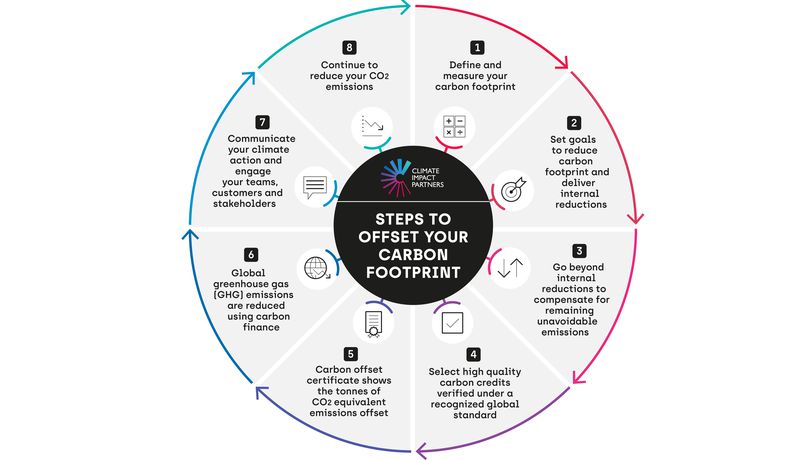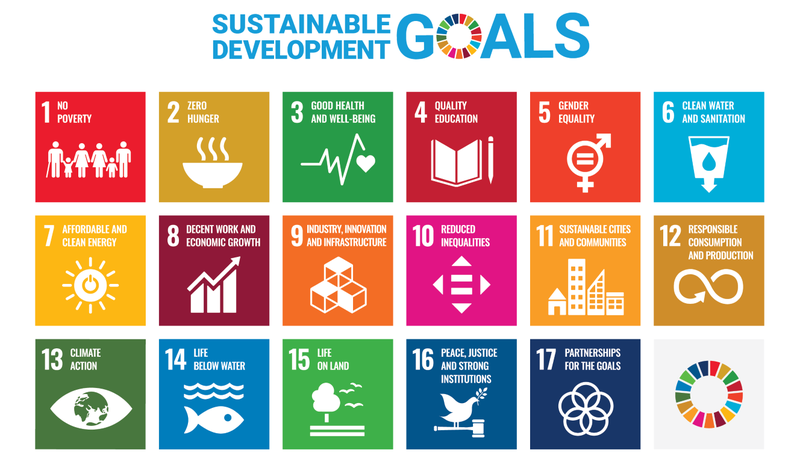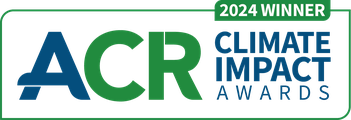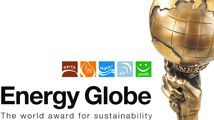Carbon offsetting enables companies and organizations to meet ambitious climate goals, puts a price on carbon to incentivize further action, and provides critical finance to accelerate the world’s transition to a low-carbon future.
What is carbon offsetting?
Carbon offsetting is the practice of compensating for carbon dioxide (CO2) emissions by funding projects that reduce or remove an equivalent amount of greenhouse gases. Offsetting one tonne of carbon means there will be one less tonne of carbon dioxide in the atmosphere than there would otherwise have been.
To offset emissions, a company must purchase the equivalent volume of carbon credits (independently verified emissions reductions) to compensate for the emissions they cannot avoid. These carbon credits offset their environmental impact by channeling carbon finance to projects that are avoiding and reducing emissions elsewhere in the world, ensuring they are financially viable and sustainable.
How can carbon offsetting benefit my company?
Offsetting carbon emissions is an interim measure as you work to reduce your own direct emissions. Companies use carbon offsets in different ways. You can use it to help compensate for:
- Your residual carbon footprint after all other means of cutting emissions have been exhausted.
- Emissions from a particular product, service, building, project, or event.
- Emissions from your supply chain.
Carbon offsetting is a cost-effective way to meet multiple social impact, environmental and company targets.
Carbon offsetting demonstrates environmental responsibility, supports your sustainability goals, and can enhance your brand reputation with customers, investors, and stakeholders.
Offsetting is also a practical step toward achieving carbon neutrality or net zero targets while you work on reducing emissions over time.
Offsetting is a valid way to reduce global carbon emissions quickly and cost effectively, because it recognises that there are barriers to an immediate shift to low emission or no emissions business models.
Why offset carbon emissions with us?
Because we make it easy for your company to take immediate, credible climate action.
- Leverage deep expertise: With roots in the voluntary carbon market since 1997, we’ve helped clients deliver ambitious climate goals worldwide.
- Partner with a proven, award winning leader: We deliver some of the largest carbon offset programs globally and are frequently recognized as one of the leading carbon offset providers—we’ve won Best Offset Retailer 12 times and the Best Project Developer 11 times.
- Work with a mission-driven team: As a Certified B Corporation, we’re recognized for upholding high standards of environmental and social performance.
- Go CarbonNeutral® today: We’ll help you take full responsibility for your current emissions through verified carbon offsets.
- Build a path to net zero: Our experts will work with you to develop a long-term carbon offset strategy aligned with your goals.
- Access global, high-impact projects: We partner with carbon finance projects in locations that matter to your company, supporting over 600 projects in more than 56 countries.
Carbon Credits Store
Purchase carbon credits today through our online Carbon Credits Store.
How does carbon offsetting reduce climate change?
To limit global warming to 1.5 degrees as set out in the Paris Agreement, we need to halve emissions by 2030. This means we need to take immediate action while also putting plans in place to decarbonize over the next decade. Corporate carbon offsetting is a vital tool to help tackle climate change as it allows you to take action for carbon emissions your company produces today, while you transition to a lower carbon future. While carbon offsetting alone will not solve climate change, it is an important tool on the way to net zero.
How does carbon offsetting work?
Offsetting carbon emissions starts with measuring your company’s footprint, setting a reduction strategy, and offsetting the emissions you can’t eliminate. Offsets let companies take climate action now while working toward longer-term decarbonization.
They are one tool among many and should complement, not replace, direct emissions reductions.

How it works
Learn how carbon offsetting works and the essential role business has to play.
Watch NowHow are carbon offsets measured?
When your company purchases carbon offsets, each credit represents one tonne of carbon dioxide equivalent (tCO2e) reduced or removed—whether through methane capture, avoided deforestation, or carbon removal like tree planting.
Carbon offset projects generating these credits measure their emissions reductions against a baseline, using approved methodologies. This baseline is independently validated before any credits can be issued.
Once the project is registered, its performance is monitored, publicly reported, and verified by a third-party auditor. After verification, the project can issue carbon credits equal to the amount of emissions reduced, giving your company a credible way to offset residual emissions.
What’s the process for carbon offsetting?
To offset your carbon footprint, start by measuring your company’s emissions and setting internal reduction goals. After internal reductions, address any remaining unavoidable emissions by purchasing high-quality carbon credits verified under recognized global standards. These credits, backed by carbon finance, help reduce global greenhouse gas emissions. You'll receive a certificate showing the tonnes of CO₂ equivalent offset. Finally, share your climate action with stakeholders and continue working to lower your emissions over time.
Partnering with carbon offsetting providers
Partnering with carbon offsetting companies like Climate Impact Partners helps businesses ensure their offsets are credible, verifiable, and aligned with the latest climate standards.
Carbon offset companies offer access to high-quality projects, handle complex regulatory and verification requirements, and reduce reputational and compliance risks.
They also provide strategic guidance, transparent reporting, and tools to track impact—making offsetting more efficient, trustworthy, and aligned with broader sustainability goals.
Examples of carbon offsetting projects
Carbon offset programs can include a variety of carbon projects to meet your corporate objectives. Climate reduction projects can range from nature-based solutions, improved household technology to renewable energy solutions.
Some projects prevent carbon emissions entering the atmosphere, such as those that replace devices using fossil fuels with cleaner technology (clean cooking).These are often known as carbon reduction or avoidance projects.
Other projects take CO2 out of the atmosphere, such as planting trees which sequester carbon as they grow. These are known as removals projects.
The positive impacts delivered by emission reduction projects are not limited to the climate. Many projects also deliver positive outcomes for local communities, economies, health, and the natural world, contributing to the UN Sustainable Development Goals. Funding emission reduction projects by buying carbon offsets helps provide necessary finance to sustain the project.
We deliver some of the largest carbon offsetting programs in the world and have supported over 600 projects in more than 56 countries. Explore some of our carbon projects.
View our immersive 360-degree video tour below to see an example cookstove project in action.

Carbon Project 360 Video Tour
Drag your mouse to move around inside the video to learn about the Aqua Clara clean water project.
Watch & Explore NowHigh quality carbon offsets for companies and organizations
Our comprehensive network of project partners gives us access to carbon finance projects around the world. All projects must pass additionality tests, demonstrating how they are delivering emission reductions beyond ‘business as usual’ and in a way that would not be possible without carbon finance.
Are your carbon offsets verified or certified?
Yes. Every carbon credit we sell represents one tonne of emissions reductions that has been delivered by a project, and is independently audited to internationally agreed standards. They are all certified by third parties and go through a rigorous system of checks and balances to prove they are real, measurable, permanent, additional, independently verified and unique.
How do you ensure the quality and integrity of your carbon offsets?
Our rigorous 10-stage due diligence process ensures the quality and integrity of every carbon project we support. Drawing on deep technical expertise and on-the-ground experience, we go beyond standard checks to assess both technical and reputational factors—including social impacts—to deliver verified, high-impact climate solutions.
This commitment to quality helps protect your brand, meet evolving reporting requirements, and showcase your climate leadership with confidence.
How do I know my company’s offsets are making a real impact?
We only work with independently verified projects that meet internationally recognized standards. Each and every one of our projects undergoes rigorous due diligence to ensure it delivers measurable, additional, and permanent emissions reductions or removals. We also provide transparent documentation and regular reporting so you can clearly see the climate, social, and environmental benefits your offsets are supporting.
Why did we choose carbon finance? Carbon finance empowers local communities to develop their own environmental and economic sustainability.
How do you meet industry carbon offsetting standards?
We work only with projects that meet independent industry standards and pass our own additional due diligence and quality requirements. All our projects are independently validated and verified to meet recognized third-party standards, including the Verified Carbon Standard (VCS), Gold Standard, ACR and the UK Woodland Carbon Code.
But our commitment to quality goes much further. Climate Impact Partners is a founding member of the voluntary carbon market’s industry association, ICROA and we are on the Board of the International Emissions Trading Association (IETA).
Our work has played an important role in the development of the voluntary carbon market and our project principles have widely influenced the debate about what counts as a valid carbon offset. We continue to campaign for high standards.
Offsetting helps UN Sustainable Development Goals
Through carbon offsets, companies can deliver on many UN Sustainable Development Goals (SDGs). Climate Impact Partners uses a robust framework to evaluate carbon finance projects against the indicators established by the UN to measure progress toward 17 SDGs.
Compare how different project types tackle different SDGs on our nature-based solutions, health and livelihoods projects, and sustainable infrastructure projects pages.
Carbon offsetting Frequently Asked Questions
How much does carbon offsetting cost?
On average, prices for carbon offsets in the voluntary market can range from just a few dollars to over $100 per tonne of carbon dioxide equivalent (tCO₂e). Factors such as project location, technology (e.g., forestry, renewable energy, direct air capture), social and environmental co-benefits, and market demand all influence pricing. For companies, the total cost depends on the size of their carbon footprint and the type of offsets they choose to purchase.
Is carbon offsetting tax deductible?
Carbon offsetting may be tax deductible, but it depends on how and why the offsets are purchased. If a company purchases carbon offsets as part of its operations—such as to meet sustainability goals or reduce environmental impact—those expenses may be deductible as a business cost. In some cases, donations to nonprofit organizations that develop carbon offset projects may also qualify as charitable deductions. We recommend consulting a tax advisor to understand the specific tax treatment based on your situation and local regulations.
Do you offer help with carbon footprint measurement or just offsetting?
We have an online calculator that offers a fast and reliable way to estimate and offset carbon footprints of most small business activities. However, it is not designed for achieving CarbonNeutral® certification under The CarbonNeutral Protocol.
If your business has a more complex footprint, is aiming for CarbonNeutral® certification, or plans to offset more than 100 tonnes, please contact us for tailored support and guidance.
Can you help us become carbon neutral or net zero?
Yes, Climate Impact Partners helps companies become carbon neutral and work toward their net zero goals.
Through our CarbonNeutral® certification program, we guide companies in measuring their emissions, reducing what they can, and offsetting the rest with high-quality, verified carbon credits.
We also support companies in developing long-term net zero strategies, aligning with international standards and emerging regulations, and selecting credible climate solutions that deliver measurable impact.
What industries do you work with?
We work with a wide range of industries, including:
- Technology
- Finance and professional services
- Travel and tourism
- Consumer goods and retail
- Manufacturing and industrial
- Energy and utilities
- Media and entertainment
Can you provide custom offsetting solutions for our company?
Yes, we can provide custom carbon offset solutions for your company. Our flexible approach allows us to tailor solutions to specific sector needs, whether for regulatory compliance, sustainability targets, or voluntary climate action.
Can you help with compliance carbon markets (e.g., Cap and Trade)?
Climate Impact Partners primarily specializes in the voluntary carbon market, helping organizations take climate action beyond regulatory requirements. While our core focus is not on compliance carbon markets such as Cap-and-Trade systems, we can support companies in navigating overlaps between voluntary and compliance efforts, especially as regulatory frameworks evolve and converge with voluntary action.
What kind of reporting or certification do you provide after offsetting?
We provide retirement certificates for each offset transaction, showing the volume of carbon credits retired, the project details, and the relevant verification standard. Clients also receive supporting documentation to meet internal, stakeholder, or other reporting needs. Our Client Hub offers a centralized, real-time view of your offsetting activity—making it easy to track progress, access reports, and demonstrate impact with confidence.
Do you offer bulk or multi-year offsetting agreements?
Yes, we offer bulk and multi-year offsetting agreements for companies seeking large-scale climate action. These agreements can help secure pricing, ensure access to high-quality carbon credits from trusted partners with financial certainty, and support planning around sustainability goals, including net zero targets. They provide certainty to your finance team with long-term budget planning, help to protect reputation and brand by avoiding risk of falling short on climate targets, and also enable investment in forward-looking carbon removal projects and help build lasting impact through sustained climate finance.
How quickly can we get started with offsetting?
We are ready to support your climate action today. We will work closely with you to develop a tailored solution, with timelines aligned to your company’s goals, whether you're looking to offset immediately or plan a longer-term strategy. Contact us today.
Carbon Credits Store
Purchase carbon credits today through our online Carbon Credits Store.

